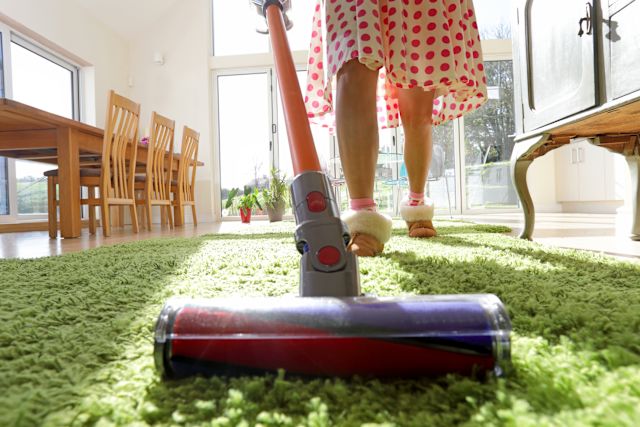Updated on November 7, 2024.
You bought the best vacuum money could buy but you're still sneezing. What gives?
Your allergy symptoms may be due to dust mites rather than pollen.
How to clean effectively for dust mites
A vacuum equipped with a HEPA (high efficiency particulate air) filter can be your best friend if you're allergic to pollen and ragweed. That's because it can greatly reduce the total number of particulates in the air.
Vacuuming can also pick up a large proportion of the dust mites that may be dwelling in your home. But it may also stir them up and send them flying into the air, which can trigger dust mite allergies.
What to do in this case?
To keep these microscopic-sized critters from irritating your nose, try these self-protective measures.
1. Be sure that the person who vacuums also empties the dust compartment outside. Emptying the compartment stirs up even more dust mites, so doing so indoors can undo all the hard work you've done vacuuming.
2. Since dust mites live in bedding, be sure to wash your sheets, pillow cases, and duvet covers once a week in hot water and dry them on high.
3. Consider adding a steam cleaner to your cleaning supply kit. Research has found that steam-cleaning carpets can help reduce dust mite levels and, in turn, dust allergy symptoms.
4. If you can't afford a steam cleaner, dust regularly. And when you do, be sure to wet-dust rather than dry-dust. That means using a damp cloth to pick up dusty residues on surfaces. Dry dusting merely kicks dust back into the air.
5. If you are sensitive to dust, ask someone else in your household to take over the cleaning chores for you.
6. If you have to do the job yourself, wear a tight-fitting high-quality mask like an N95. This will cut down on the number of particles you inhale.
If you have asthma or other allergies, put these tips into practice to develop a regular cleaning routine to help ease your symptoms.







